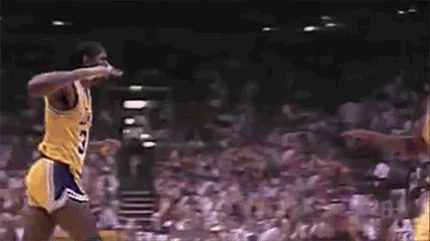DanTown8587 wrote:Ditchweed wrote:DanTown8587 wrote:They would of course pay more. They all would have to pay more to second tier stars. They couldn't afford LeBrons or Griffins. they would pay a lot of money to guys who don't change revenue. Westbrook, Bosh, etc
With a hard cap, all teams pay the same maximum amount. The amount that each would pay would be a %age of the BRI divided by the 30 teams.
A small market team still wouldn't pay more than a large market team and vice versa, all 30 teams have $70 million max teams, for example, and all 30 teams pay the same $70m. They would just have different players but not all teams would have to have a max salary player. An organization could get a "better than average but more of them" player team. Same cost ... $70m.
(Next year, the minimum is 90% of the cap so teams still have to spend even if they want to spend lower, or they get penalized for the difference)
Ok, let's say each team pays the exact same. That only helps large markets. The Pacers, Bucks, Kings, Bobcats aren't able to sign players that impact their revenue stream enough to help them pay $70 million. If you say the cap goes up to $60 million next year, 90% is 54 million. You've just said every team in the league has to essentially pay the luxury tax. That's just not feasible for a lot of teams.
The current system is the best it can be. While you can NEVER make unrestricted free agency good for small markets, max salaries and restricted free agency certainly help keep their talent for many many years. The Thunder will control Durant, Westbrook for NINE years.
It wouldn't affect their revenue streams, and a more equitable system draws more payer fans for small market teams (theoretically) plus there is still revenue sharing amongst teams.
I never said every team will pay the tax. Right now, the salary cap and luxury tax levels are two different things: the salary cap is set at $58m and the luxury tax cutoff is $70m. With a hard cap, there will not be that difference, using 2012/2013 numbers and if they instituted a hard cap, it would most likely be the higher number and be set at $70m. There will just be one cap number to deal with, not two.
So if a hard cap is set at $70m , the minimum for a team to pay starting in 2013/2014 would be $63m using the new minimums. If they don't pay that, they get penalized for the difference so they might as well spend it. That amount is independent of their team's local revenue streams and is set by the %age of the BRI for the league.
It gets long to extrapolate the new player balance but what you are missing from the hardcap argument is that a team can not put more than two players on a team at a max salary of $26m. As well, the remaining teams do not have to have a max salary player. As an example, would a team spending $52m on two players with $18m left for the other twelve be better than a team spending $45m on three top players with $25 left for the other eleven?
Players would just reshuffle around the league and a team like LA would still get their choice of top stars like a Kobe and a Howard, but that is all they would get star wise and they wouldn't be able to keep players like Gasol or Nash for $29m. As well, keeping max contracts with a hard cap system still doesn't mean it's a system where OKC couldn't offer Durant more or a longer term than any other team, that wouldn't change.
Though keep in mind that many proponents of a hard cap also want no salary maximums. If a guy like Wade can demand and get his $50m, then let him get it but then a team can only get one star and will have only $20m for for the filler 13. So be it.
Anyway, this is all looking at things from the wrong direction again. Go back and read my post "
What's missing in all these arguments is why does the NBA league exist?'. It is back a few paragraphs. The league is about maximizing profits for the owners and what the owners determine will do that is what will eventually be put in place.





















